Birding The Cleveland Way – Saltburn to Staithes
Birding the Cleveland Way
Growing up on the northern edge of the North York Moors National Park, Richard has always wanted to walk the entire length of the Cleveland Way, to explore the landscape, birds and wildlife along this fabulous National Trail. His plan is to walk a different section every month over the course of 2024 and write a blog in the process. Joining him on these leisurely walks is artist Jo Ruth.
September – Saltburn to Staithes
This was our first day on the coast! Our excitement was enhanced by a light easterly wind which in theory, was perfect for drifting continental songbirds across the North Sea. The autumn is an exciting time for birders and naturalists alike with lots of animals on the move, it really feels like a time of discovery.

Looking north to Saltburn beach and pier © Richard Baines
Following the Cleveland Way trail, we walked down the cliff steps from the town centre of Saltburn then upwards again to the top of Huntcliff, a Jurassic sandstone sea cliff overlain with boulder clay. From the top of the steps, we looked back across the picturesque town and the historic pier which was opened in 1869.
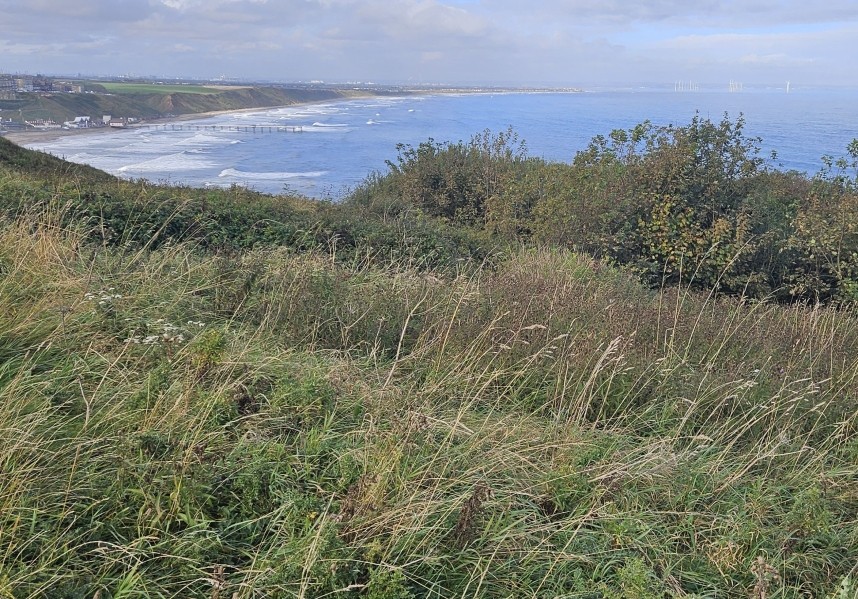
Great habitat for migrant songbirds at the top of Huntcliff © Richard Baines
As soon as I got the top, I was on the lookout for bushes which may harbour migrant birds. A short way along the cliff line I found a perfect place with isolated trees and shrubs very close to the edge, a first landfall for hungry birds. Another birder appeared and told us that there was a Greenish Warbler and two Yellow-browed Warblers seen here the previous day. These scarce songbirds had flown thousands of miles to reach the Yorkshire coast. Unfortunately, we couldn’t linger to wait for them to appear but I did manage to see a Whinchat close by perched on a tall piece of Hogweed. A perfect sturdy perch from which to hunt insects.
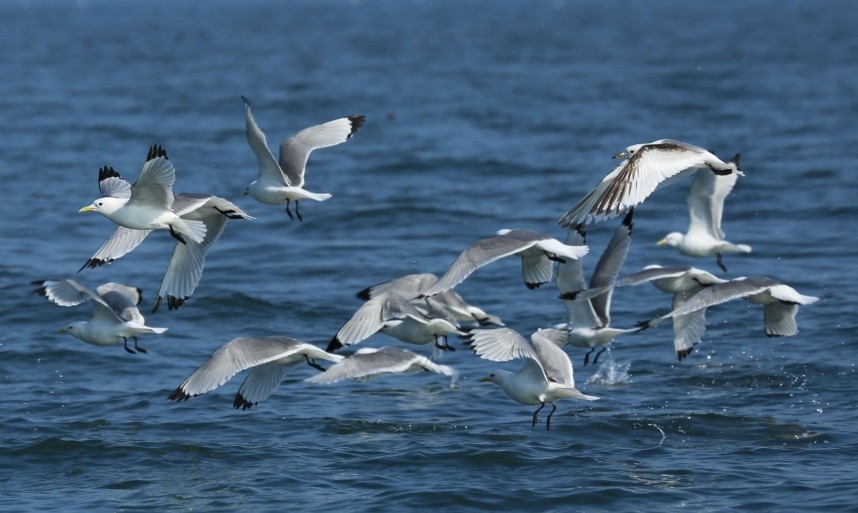
Kittiwakes offshore - North Yorkshire © Richard Baines
In the summer nesting Black-legged Kittiwakes can be found on the cliffs here. This is also a great look out for dolphin watching. In the last ten years we have been fortunate to have a resident population of Bottle-nosed Dolphins which are regularly seen offshore at Saltburn.
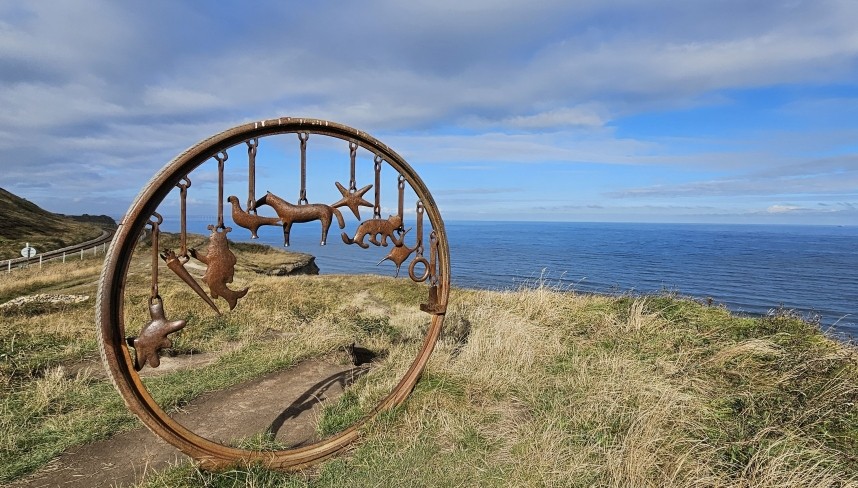
The Circle or Charm Bracelet © Richard Baines
Just beyond Warsett Hill and still on the cliff top is an impressive sculpture created by artist Richard Farrington. Named the Circle or ‘charm bracelet’ by locals it has ten charms made of local steel creating a wonderful landmark and adding even more charm to this beautiful trail.
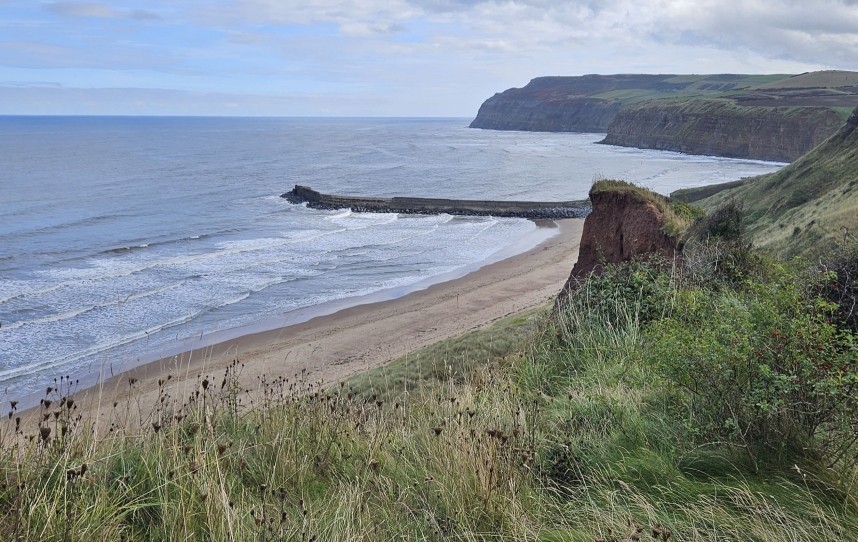
Looking south over Skinningrove beach © Richard Baines
From Warsett Hill the path runs down to a lower section of cliffs above the small town of Skinningrove. The beach and harbour wall form a great view across the coastal landscape. Several European Stonechats appeared by the side of the trail, a family group with at least three juveniles. No doubt part of a second brood. Stonechats have benefited from milder winters on the English coastline. Not so long ago it was unusual to find these birds so close to the edge of these Yorkshire cliffs.
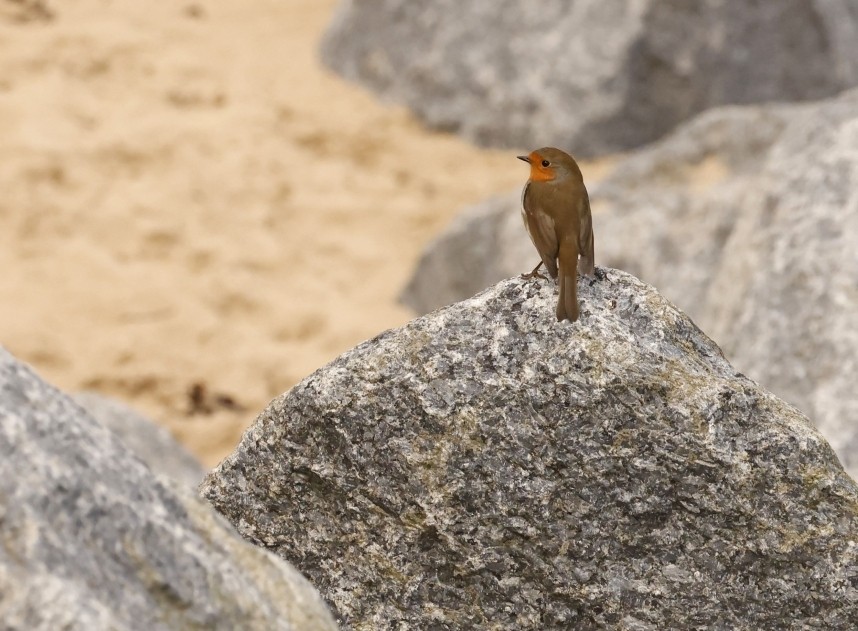
European Rob - Skinningrove September 2024 © Richard Baines
On Skinningrove beach we found two Northern Wheatears and a European Robin. The Robin was on the edge of the rocks with the wild waves close by. It looked as if it had only just arrived from Europe, landing on the first bit of dry habitat it could find.
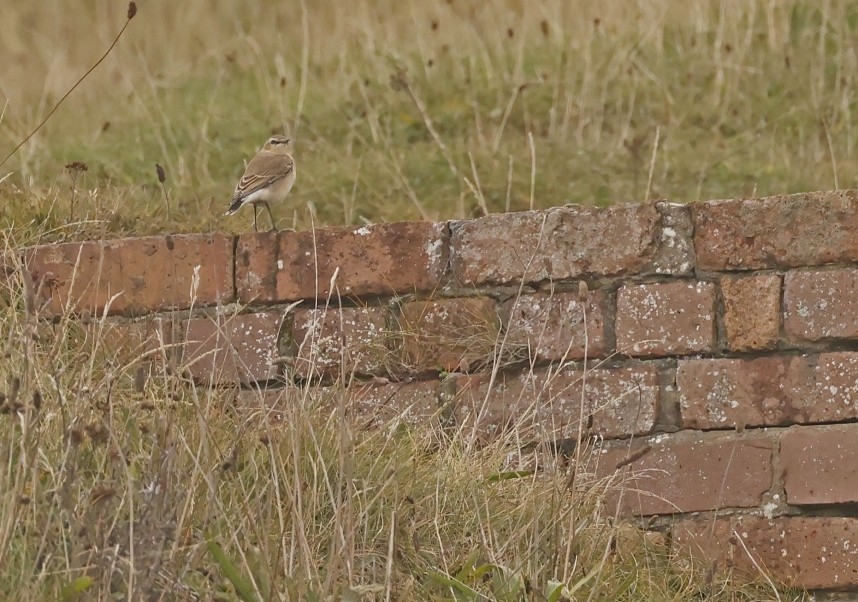
Northern Wheatear - Skinningrove September 2024 © Richard Baines
The Wheatears were on their way to sub-Saharan Africa, the Robin had arrived to spend the winter in western Europe. Two songbirds crossing paths with completely different stories.
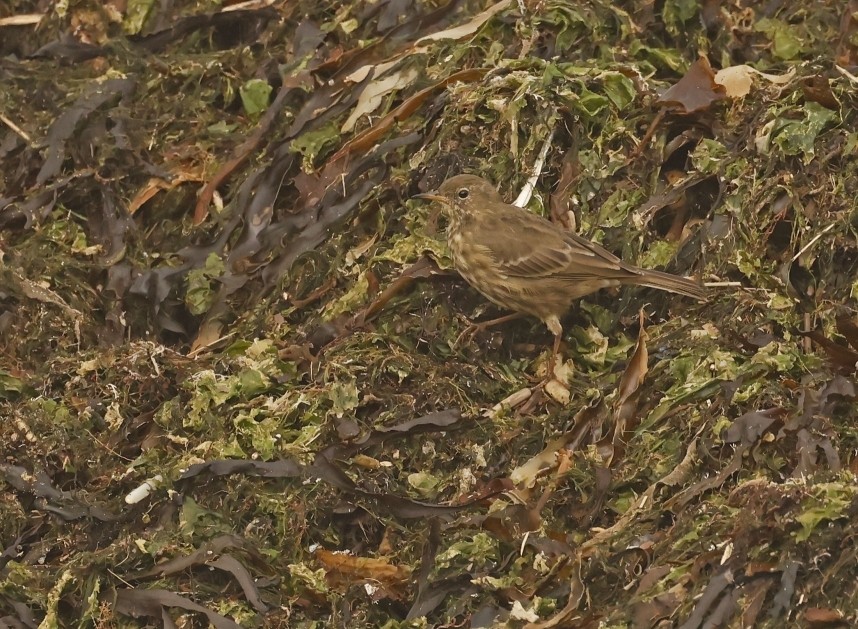
Rock Pipit - Skinningrove September 2024 © Richard Baines
Down on the beach a Rock Pipit was feeding on insects, perfectly camouflaged amongst the seaweed. The British race of Rock Pipit is mainly sedentary. In contrast to its neighbours flying around nearby this small bird was going nowhere! Locally known as ‘Sealarks’ their high pitch song can be heard in spring under the cliffs.
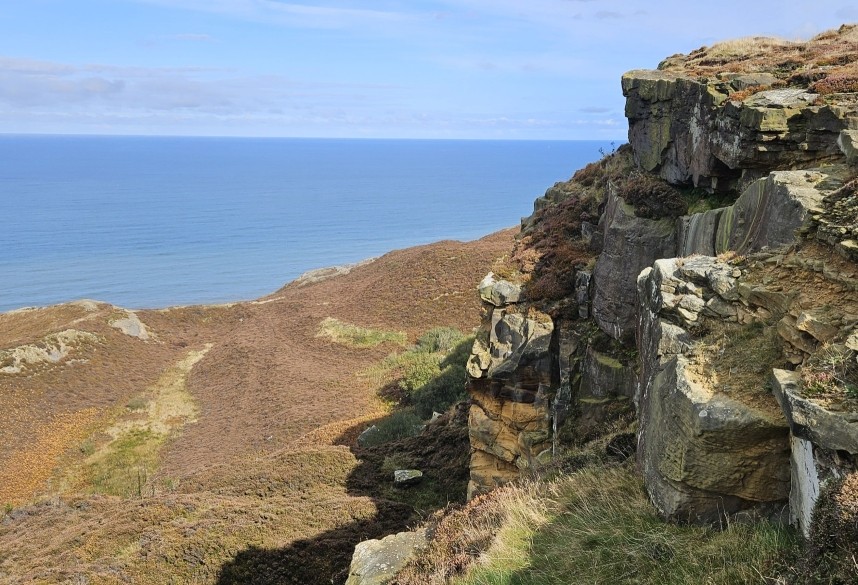
Boulby Cliffs - September 2024 © Richard Baines
From the beach and stream at Skinningrove the path climbs up and past Hummersea House eventually reaching one of the highest sea cliffs in England known as Boulby. This is a massive headland with some impressive rock outcrops at the head of the cliff. The shape and form of the cliffs has been changed dramatically by Alum mining which dominated the area between 1604 and 1871.
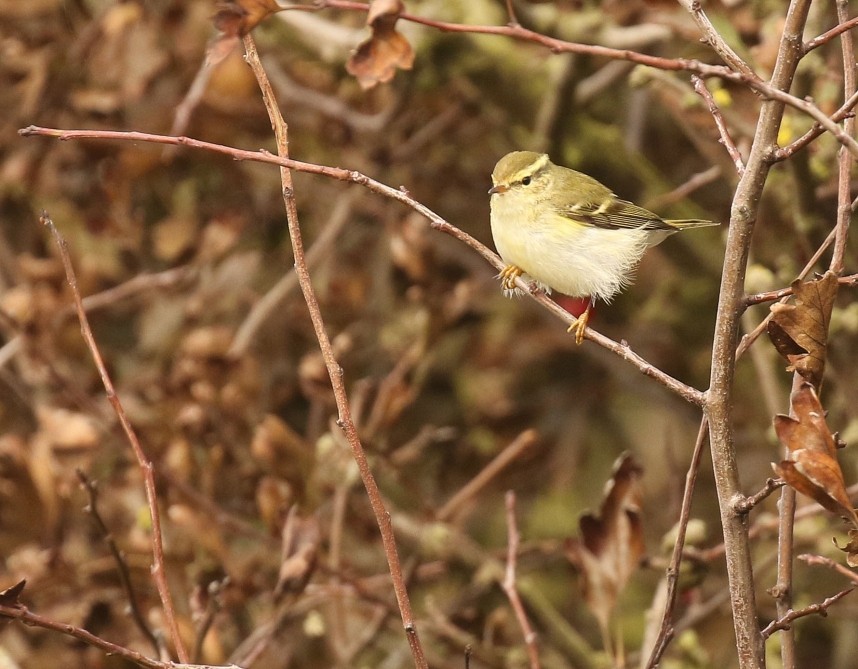
Yellow-browed Warbler - East Yorkshire © Richard Baines
The undercliff below the trail has since been colonised by shrubs and pioneering plants. I stopped to look carefully at one area of willows and heard the distinctive sound of a calling Yellow-browed Warbler. This was a lovely find because I knew the amazing journey this small and delicate bird had travelled. All the way from the forests of the Urals and only weighing less than 10 grams.
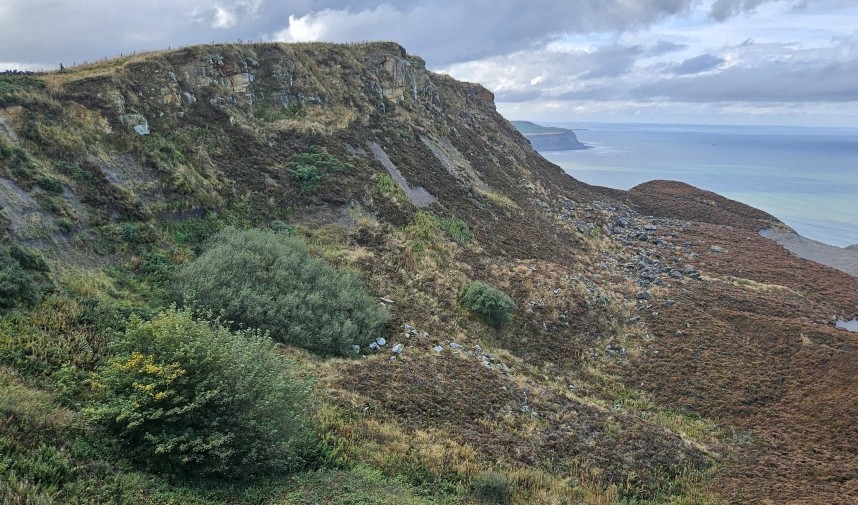
The undercliff at Boulby - September 2024 © Richard Baines
At the top of Boulby Cliff there are several linking footpaths which lead back inland to the town of Loftus. I remember as a teenage birder jumping on the bus in Middlesbrough and heading for Loftus where I would search for interesting birds on Boulby Cliff. These paths are a great way to visit the headland if you are short of time without walking the longer coastal trail.
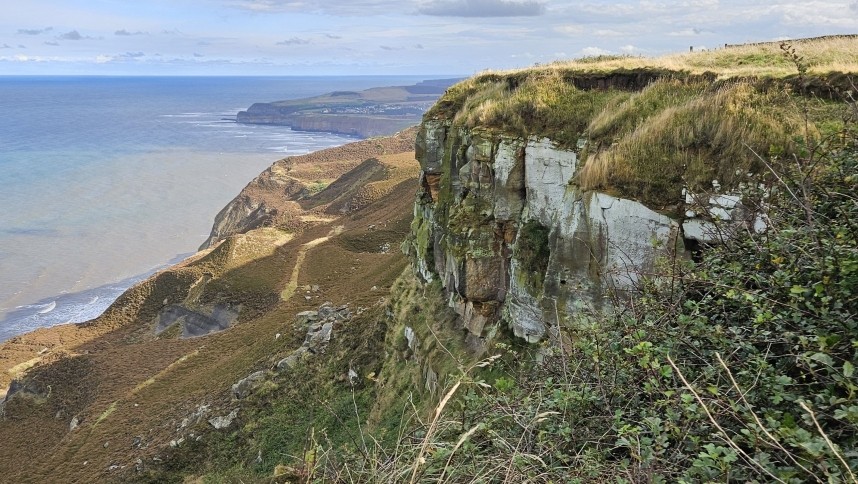
Looking north from Boulby to Staithes - September 2024 © Richard Baines
Continuing slowly downwards, we walked towards Staithes, leaving the massive cliffs of Boulby behind. More Stonechats and Reed Buntings flew along beside us on the trail and another Wheatear. With songbird migration at its peak this day had been all about impressive feats of endurance. Our short walk less than ten miles suddenly seemed like a very insignificant journey compared to where some of these birds were headed or had come from.
© Richard Baines, Yorkshire Coast Nature



 Back to Blog
Back to Blog
